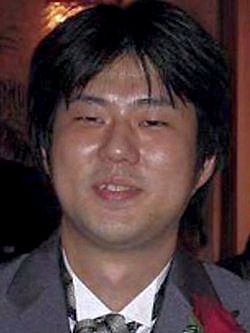

In 2013, they each designed a Gaist character for the video game Gaist Crusher. Oda and Akira Toriyama created a 2007 crossover one-shot called Cross Epoch, that contains characters from Toriyama's Dragon Ball and Oda's One Piece.
#Eichiro oda free#
Additionally, a special chapter of the manga was created and included in tankōbon volume 0, which was given free to attendees of the film and also contained his drawings for the film. įor the tenth One Piece animated theatrical film, Strong World, Oda created the film's story, drew over 120 drawings for guidance and insisted Mr. In their 2010 poll on the Mangaka that Changed the History of Manga, Oda came in fourth.

He shared the place with Yoshihiro Togashi, creator of YuYu Hakusho and Hunter × Hunter. In a 2008 poll, conducted by marketing research firm Oricon, Oda was elected fifth most favorite manga artists of Japan.
#Eichiro oda series#
In 2013, the series won the 41st Japan Cartoonists Association Award Grand Prize, alongside Kimuchi Yokoyama's Nekodarake Nice. A record that was broken several times by subsequent volumes and currently held by 67's 4.05 million initial printing in 2012. Volume 57's print of 3 million in 2010 was the highest first print for any book in Japan, not just manga. Volume 56 received the highest initial print run of any manga, 2.85 million copies, in 2009. Īdditionally, individual volumes of One Piece have broken publishing records in Japan. It sold 100 million collected tankōbon volumes by February 2005, over 200 million by February 2011, had 320,866,000 copies printed worldwide by December 2014, 430 million volumes in circulation worldwide as of October 2017, 440 million copies sold as of May 2018 and 450 million in print as of March 2019. In 1997, One Piece began serialization in Weekly Shōnen Jump and has become not only one of the most popular manga in Japan, but the best-selling manga series of all time. Luffy as the protagonist, who then became the protagonist of One Piece. ĭuring this time, Oda drew two pirate-themed one-shot stories called "Romance Dawn", which were published in Akamaru Jump and Weekly Shōnen Jump respectively in late 1996. Watsuki credits Oda for helping create the character Honjō Kamatari who appears in Rurouni Kenshin. At the age of 19, he began working as an assistant to Nobuhiro Watsuki on Rurouni Kenshin, before winning the Hop Step Award for new manga artists. That got him into a job at the Weekly Shōnen Jump magazine, where he originally worked as assistant manga artist/assistant to Shinobu Kaitani's series Suizan Police Gang before moving to Masaya Tokuhiro on Jungle King Tar-chan and Mizu no Tomodachi Kappaman, which gave him an unexpected influence on his artistic style. Pandaman was not only used in a chapter of the manga but would later return as a recurring cameo character in Oda's own works.Īt the age of 17, Oda submitted his work Wanted! and won several awards, including second place in the coveted Tezuka Award. He submitted a character named Pandaman for Yudetamago's classic wrestling manga Kinnikuman.
#Eichiro oda tv#
He recalls that his interest in pirates was probably sparked by the popular TV animation series titled Vicky the Viking. His biggest influence is Akira Toriyama and his series Dragon Ball. He said that at the age of four he resolved to become a manga artist in order to avoid having to get a "real job".


 0 kommentar(er)
0 kommentar(er)
